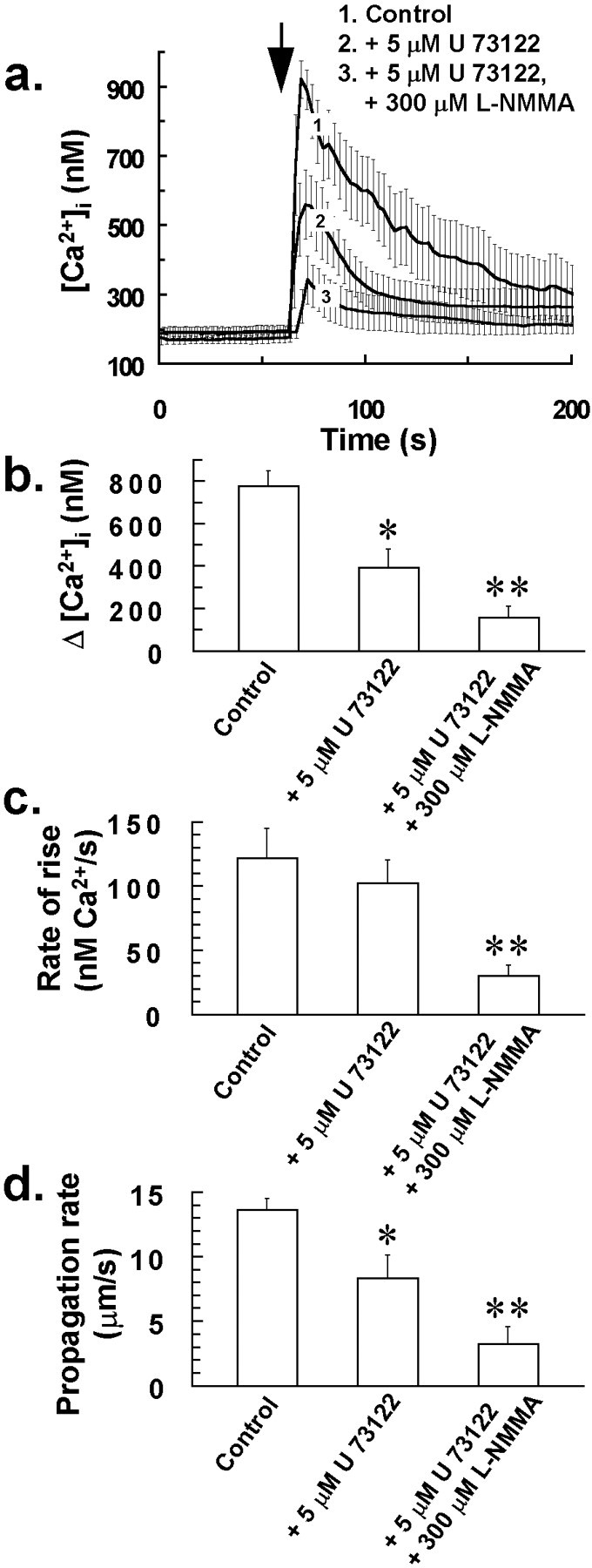Fig. 7.

Additive inhibitory effect for PLC and nitric oxide synthase inhibitors on intercellular Ca2+ wave propagation in glia. Pretreating cells with the phospholipase C inhibitor U 73122 (5 μm) for 10 min or l-NMMA (300 μm) for 30 min and U 73122 (5 μm) for 10 min in combination, resulted in a reduction in both Δ[Ca2+]i (b) and also Ca2+ wave propagation rate (d) after mechanical stress of a single glial cell at the time indicated by the arrow ina, with the combined drug treatment having a greater inhibitory effect on the Ca2+ wave compared to solely treating cells with PLC inhibitor. a,[Ca2+]i for 25 of the closest responding glial cells to the mechanically stressed target cell was averaged for individual experiments. Traces in arepresent the mean of these averaged responses from at least four separate experiments for each of the above treatments, with error bars indicating SD. Similarly, Δ[Ca2+]iand rate of rise of [Ca2+]i for 25 of the closest responding glial cells to the mechanically stressed target cell were averaged for individual experiments, with bars inb and c indicating the mean of these averaged parameters ± SD from at least four separate experiments (*p < 0.05 vs control value; **p < 0.05 vs 5 μm U 73122 value; Student's t test for unpaired observations).d, Effect of the above treatments on the stress-induced intercellular Ca2+ wave propagation rate. Bars ind indicate the mean Ca2+ wave propagation rate ± SD from at least four separate experiments (*p < 0.05 vs control value; **p < 0.05 vs 5 μm U 73122 value; Student's t test for unpaired observations).
